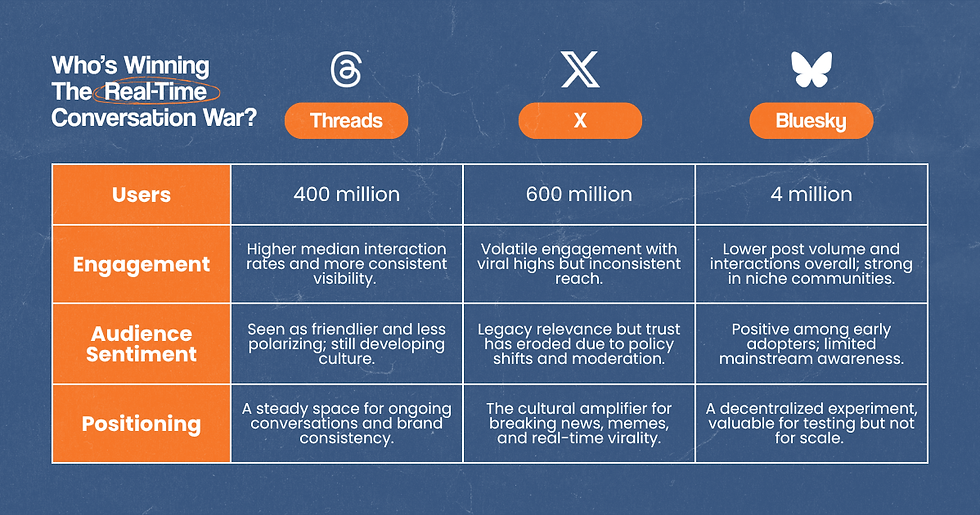The Case for Facebook
- Eric Elkins

- Apr 26, 2018
- 4 min read
Updated: Jun 23, 2020

Everyone on the WideFoc.us team gets this question at least a few times per week: “In light of Facebook’s recent troubles, are your clients concerned about staying on the platform?”
From Zuckerberg’s robotic non-apology to Congress, to news of major breaches in user data access, to confusion about privacy settings, to the Russians (and others) gaming ad targeting and pages to affect voters, and simmering anger at the way Facebook didn’t take proper precautions to protect us, you might think the app/platform/website/ad service/media outlet/all-consuming distractor was about to crash and burn.
But it’s not.
With TWO BILLION users, including people of all ages and demographics, a robust advertising program, and an intuitive digital experience, Facebook has become part of global society’s daily life. And that’s before we even get into their other products and services, like Instagram, Oculus, worldwide messaging juggernaut WhatsApp, and others we don’t even know about.
Facebook has simply become too vital in how we share content — photos, links to articles, rants, family news, etc.— to just go away. It’s an essential part of our digital infrastructure, like email and instant messaging. As much as we love to hate it (similar to our relationship with email), just about everyone in the United States uses Facebook nearly every day. Grandparents stay in touch with their families and old college pals (Baby Boomers are among the top Facebook users). Young parents use it to share baby’s first step, commiserate about how to get poop out of the couch cushions, and ask for recommendations for upholstery cleaners. Millennials use Facebook, less than just about any other demographic, to stay in touch with friends and family. Facebook isn’t cool or trendy. It’s not sexy or, honestly, even all that fun anymore. But it is the easiest way to share and learn about what’s going on in the lives of our local and far-flung communities.

Advertisers know that too.
Facebook users aren’t the customer; they’re the product. We (as users) trade our privacy for the access and interactions the channel provides. And Facebook serves users up to advertisers in real time, using what it knows (from what we post, what we like or comment or share, what websites we visit, who are family and friends are, where we live…) to allow for better targeting, better insights, and more effective messaging.

As creepy as it sounds… okay, it’s very creepy.
But it’s also helpful. Wouldn’t you prefer to see ads customized for you in your newsfeed?
When Facebook advertising works well, it’s compelling and clickable, beneficial to the user, and worth a second look. As a social media agency, we use Facebook’s deep, granular targeting to help our clients meet their business goals, whether it’s to increase qualified website traffic, generate impressions of thought leadership, build an email list, or to encourage donations to a nonprofit. So we appreciate how powerful the tool can be, even as we’re wary of it.

We write copy and create visual storytelling that is resonant for our clients’ audiences. Our ad approaches use deep strategic targeting that focuses the budget on users who are most likely to find the content relevant, worthwhile, and interesting. That means ad dollars go further, because we’re not taking a scattershot approach. We want qualified leads — people likely to buy or donate, people who will share an important post, people who should find the content entertaining or informational — to be our clients’ Facebook (and Instagram and Twitter) fans and to be their current and future customers. Or investors. Or donors. Or brand ambassadors.
Solid targeting saves our clients money, but it’s also less-likely to offend Facebook users, meaning online reputations stay solid, and you, a Facebook user, aren’t as likely to be served an ad that annoys you.
And though we’ve all been privy to rumblings about changes in Facebook’s newsfeed algorithm, we haven’t seen significant changes in paid vs. organic reach or cost-per-action (be it clicks, page likes, or post engagement) for our clients. Facebook still needs to make money, after all, which means it needs advertisers to find value on the platform.
Social media and digital marketing are very new industries — and proper measures must be put into place to protect users. Cars didn’t always have seat belts, and buildings didn’t always have emergency exits. But public policy and regulations led to safer vehicles and public areas. These big breaches have brought discussions about the risks and rights of users on private networks to the forefront, and it’s past time to build safety policies for entities that collect so much personal data from us each day.
We’re already seeing a slow and steady improvement in this area, but it won’t happen if we don’t push for it as digital citizens. As social media professionals, we’ll stay current on this process, and contribute to building better guardrails wherever we can.
In the meantime, we’re not giving up on Facebook at WideFoc.us World Headquarters — it is still the primary social network for engaging with wide audiences, whether B2C or B2B. No platform is better at messaging the right people about the right thing at the right time, which is what our clients look to us to do.

Eric Elkins is CEO and Chief Strategist at WideFoc.us. Eric brings nearly two decades of experience to our clients. In his other life, he’s a single dad, an avid eater, and a bourbon aficionado.










